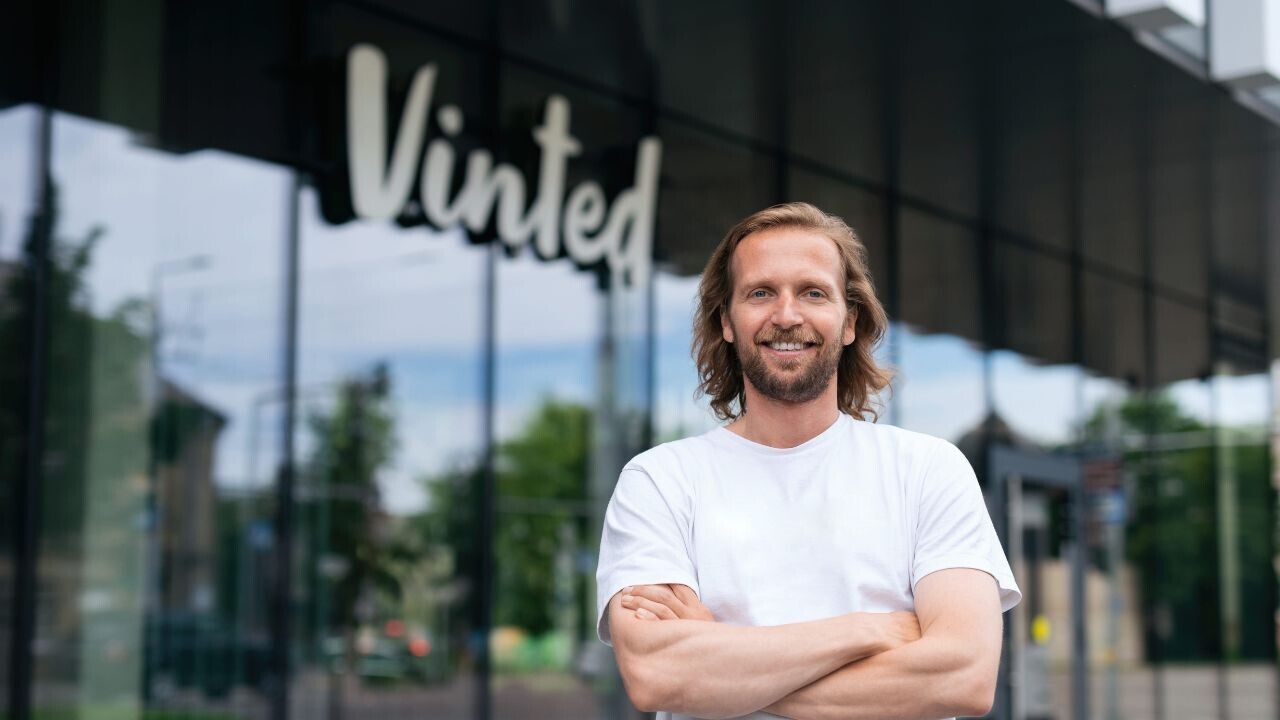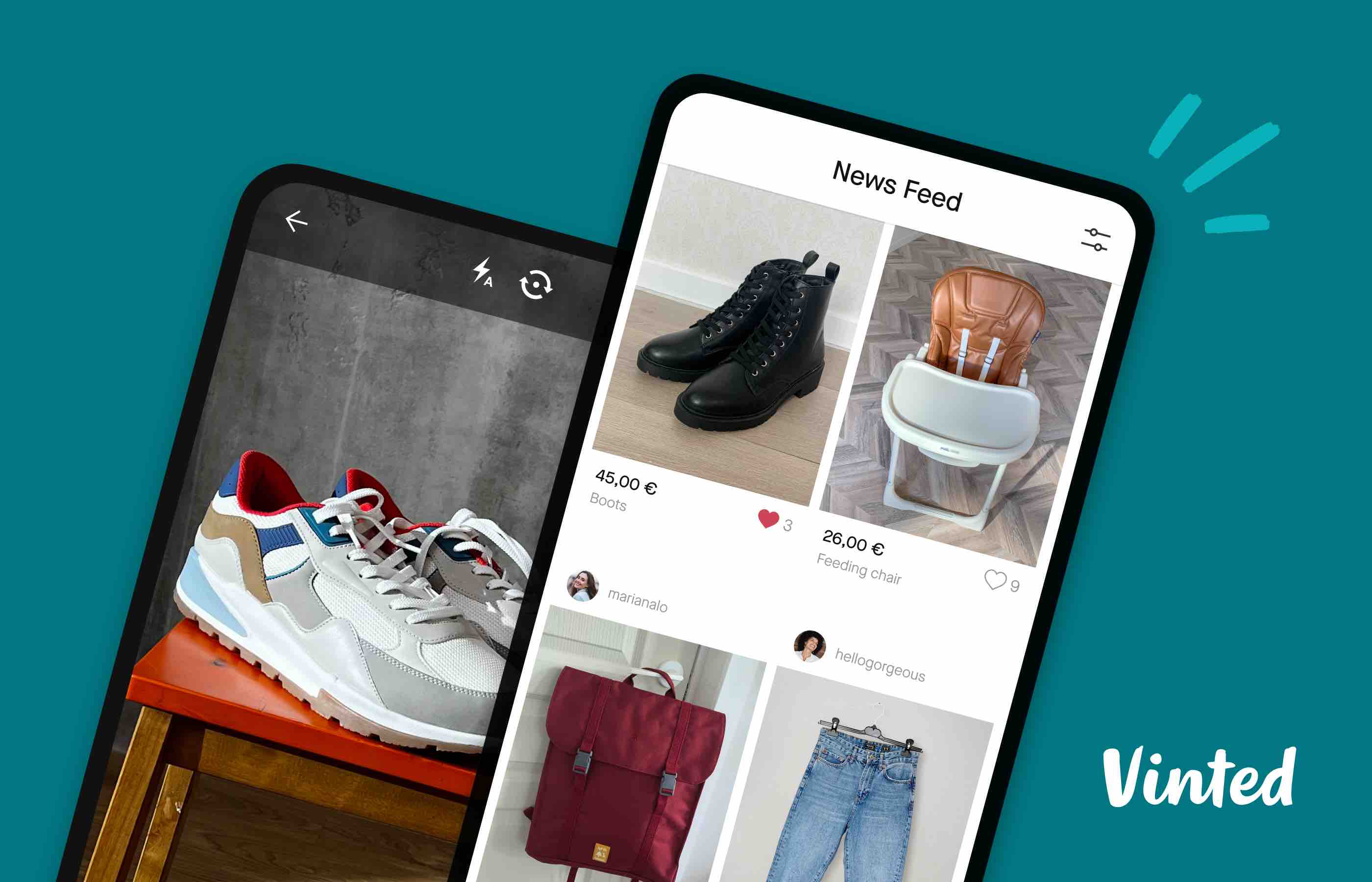
This article features an interview with Vinted CEO Thomas Plantenga, who is speaking at TNW Conference on June 21. Check out the full event schedule here.
Vinted CEO Thomas Plantenga has reason to celebrate. His company recently became the first “pre-loved” clothing platform to make a profit after a monumental 61% surge in sales. It’s now firmly established as Europe’s largest online marketplace for second-hand fashion.
The results represent a remarkable turnaround. When Plantenga joined Vinted in 2016, the company was on the verge of collapse.
The trouble emerged despite a promising start based on a common problem. It was 2008 and Milda Mitkute, a 22-year-old Lithuanian, was moving into small student accommodation. But her new home didn’t have space for her old clothes.
At a house party in Vlinus, Mitkute explained her dilemma to Justas Januaskas, an old friend and programmer. The duo decided to create a website to sell her surplus clothes. Within a few weeks, they had launched the first version of Vinted. The project quickly evolved into a popular platform. But financial problems were bubbling under the surface.
Vinted was free for users and monetised through advertising. Before long, those revenues barely covered the site’s server costs. Desperate for extra income, the company introduced a fee for sales. The switch sparked uproar from users, who fled the platform in droves. By 2015, the company was on the brink of bankruptcy.
Searching for salvation, Vinted sought advice from Plantenga. Back then, the Dutch entrepreneur was living in New York and working for FJ Labs, a VC firm focused on marketplace startups.
Plantenga had also enjoyed success as an entrepreneur. He co-founded Bookaboat, a pioneering rental service for boats, and a Craigslist rival called Sell It, which he eventually sold to Spanish sector leader Wallapop. His track record impressed OLX, a Dutch online marketplace, which hired Plantenga as head of emerging markets.
It also impressed Insight Venture Partners, a VC firm that backed Vinted. In 2016, the investors invited Plantenga to Vilnius to share his expertise.
“I planned to stay for five weeks but never flew back to New York,” Plantenga tells TNW.
Instead, he led Vinted through a momentous comeback.
A new market
The transformation began with tough restructuring. Plantenga slashed the headcount, centralised his team in Lithuania, and closed offices overseas. “This was incredibly hard, but necessary for the company’s survival,” he says.
Plantenga also radically reshaped the business model. The biggest change was the removal of the seller fee. Vinted also introduced a buyer protection fee, which now covers three components: safer encrypted payments, customer support services, and a refund policy.
“We needed to support the sellers first to attract buyers,” Plantenga says.
As old users flocked back, Vinted wanted to get a message out to the public: the second-hand market was flourishing again.
To spread the word, the company embarked on a mass marketing drive. Big TV campaigns launched in the platform’s key markets.
“From there,” Plantenga recalls, “the business began to grow again.”

As the revenues rose, new investments began flowing into the firm. In 2019, Vinted raised €128 million in an equity funding round that valued the business at over €1bn. The startup had become Lithuania’s first unicorn.
Two years later, the company raised another €250mn in Series F funding. The round pushed Vinted’s valuation to €3.5bn.
Vinted goes green
A steady stream of new features accelerated the upsurge. From a verification service for luxury fashion to a refined recommendation system, Vinted brought an array of digital upgrades to both buyers and sellers.
The most ambitious of them all was a new shipping business. Named Vinted Go, the brand delivers items to dedicated lockers and parcel shops in over 2,500 locations.
The network promotes a concept known as PUDO (pick-up, drop off), which can lower carbon emissions. According to independent research, PUDO delivery of Vinted parcels generates around 97% less CO2 than home delivery on the last kilometre. Across the whole journey between shop and pick-up point, the emissions drop by 42%.
Plantenga is proud of Vinted’s drive for sustainability. By combining a financially strong model with a lower carbon footprint, he believes the company can generate impact at scale.
“Shopping second-hand fashion on Vinted is a better choice for the climate than buying new, so we believe that we can have a positive impact by making second-hand first choice,” he says.
Vinted backs these words with evidence. On average, shopping for second-hand fashion on Vinted instead of buying new had an estimated emissions saving of 1.8 kg of CO₂e. More than a third of orders on the platform prevent the purchase of a new item.
Consumers are also expressing growing support. One fifth of Vinted users would choose second-hand over new — even if the price was the same.
The research has echoes across the industry. Pre-owned clothing sales are set to make up a tenth of the global fashion market in 2025. Worldwide sales surged by 18% last year to $197bn (€184bn). By 2028, they’re forecast to hit $350bn (€326bn).
In March, the benefits hit Vinted’s bottom line with a bang. After a €20.4mn loss in 2022, the company soared to a €17.8mn profit last year.
Trading tips
Vinted is now spreading across the globe. The company recently expanded into Croatia, Greece, Canada, and across the Nordics.
Tastes vary in these markets, but successful strategies for users are universal. Plantenga has several tips. For sellers, he suggests listing items when they’re in season and using a variety of keywords.
“People search with different terms, so the more relevant terms in your listing, the easier it is to be found,” he says. Instead of just “black t-shirt,” for instance, they could try “plain black, short-sleeve T-shirt with V-neck.”
“You can also improve your chances by preparing listings for the weekend, as we know that most shopping on Vinted happens on Sunday evenings,” Plantenga adds.
For buyers, meanwhile, he advises paying attention to details. That means checking ratings, reviewing recommendations, or contacting sellers for more information.
Users can also tailor their feeds by setting up personal preferences for categories, sizes, and brands. They can also follow members whose styles they like.
As a final tip, Plantenga has a suggestions that may appear bad for his business: stop and think before you buy.
“A more sustainable consumption pattern always starts with asking yourself: do I want it, do I need it, am I going to use it? And if possible, use it for its full life,” he says.
“If we all do that, then we are already one step closer to being mindful of the needs of the Earth.”
Thomas Plantenga is speaking at this year’s TNW Conference, which takes place on June 20-21 in Amsterdam. If you want to attend, we have a special offer for our readers. Use the code TNWXMEDIA at checkout to get 30% off your business pass, investor pass or startup packages (Bootstrap & Scaleup). We’re also offering a 50% discount for the Women in Tech ticket.
Get the TNW newsletter
Get the most important tech news in your inbox each week.




